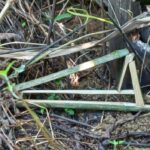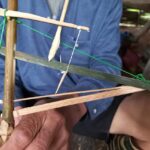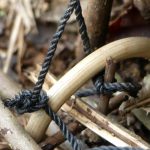The hunting methods of the Mentawai people have developed over about 3000 years. Their ancestors were of a Mongolian race that migrated from Taiwan via the Philippines to modern-day Indonesia. They arrived around 1000 BC at Siberut island in West Sumatra province in Indonesia.
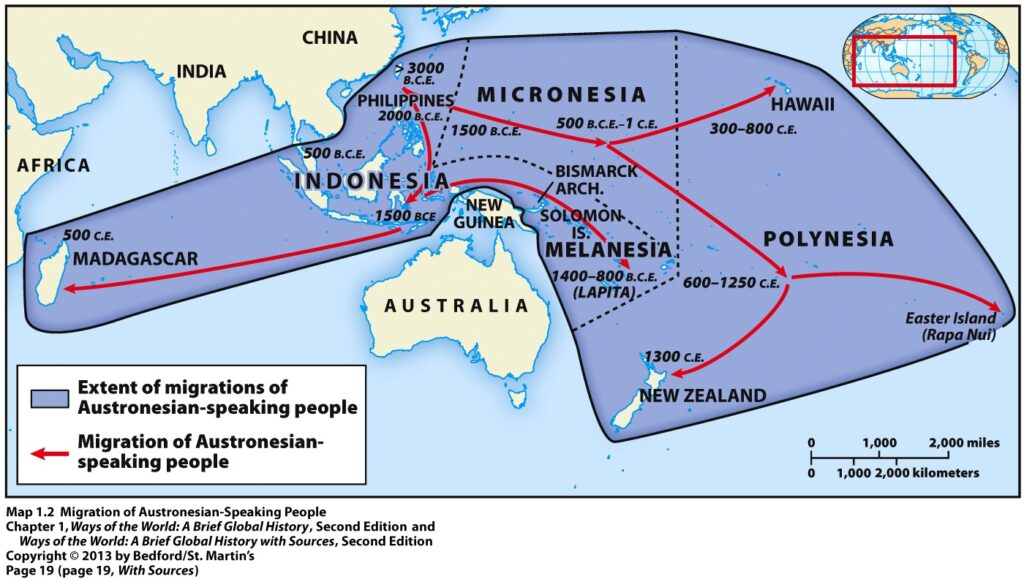
These people primarily rely on Sago and Taro as their main food sources. Chickens and pigs are mainly reserved for ceremonial occasions. Consequently, wild animals become essential for protein needs. Despite this, the Mentawai people are selective in their eating habits. They avoid arthropods such as insects, arachnids, centipedes, and animals they deem dirty, like reptiles and rats.
Upon arriving at Siberut and considering the existing weapons, local animal behavior, vegetation, and raw material availability, the hunting bow with poisoned arrows emerged as the primary hunting tool suitable for local conditions.
Which animals are mainly targeted for hunting by Mentawais?
The Mentawai people primarily hunt three monkey species: the Siberut Macaque (Bokkoi), the Pig-tailed Langur (Simakobu), and the Mentawai Langur (Joja).
Siberut Macaque; (Macaca siberu), Bahasa Indonesia: Bokkoi

According to this source, the Bokkoi, on average, covers 2 km per day in its habitat and spends 57% of its time moving. Its diet consists of 76% fruits and 12% arthropods. This makes them highly mobile, often found near fruit trees, including rattan, palm, figs, and more. They frequently raid ladangs, which are the local gardens, although their meat isn’t favored. People primarily hunt them to protect their gardens.
Pig-tailed Snub-nosed Langur; (Simias concolor), Bahasa Indonesia: Simakobu
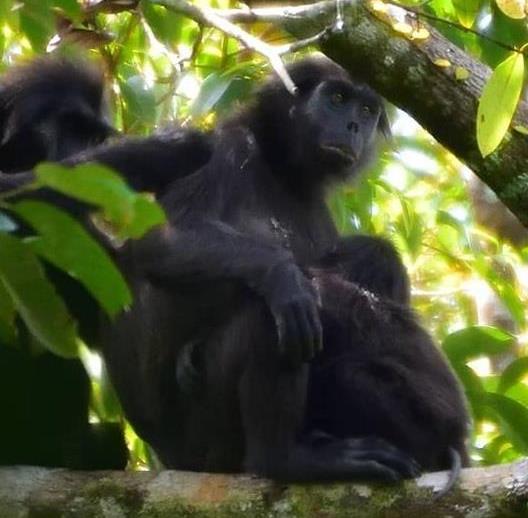
The Simakobu has the smallest home range, moving around 570 meters daily. It spends 56% of its time resting and 31% feeding. Its diet is mainly comprised of leaves (57%), fruits (23%), and flowers (18%). This makes it inconspicuous to hunters; it tends to stay put when found and rarely moves. When threatened, it typically freezes rather than fleeing. It’s the primary target for hunters due to its tasty meat and ease of hunting.
Mentawai Langur; (Presbytis potenziani), Bahasa Indonesia: Joja
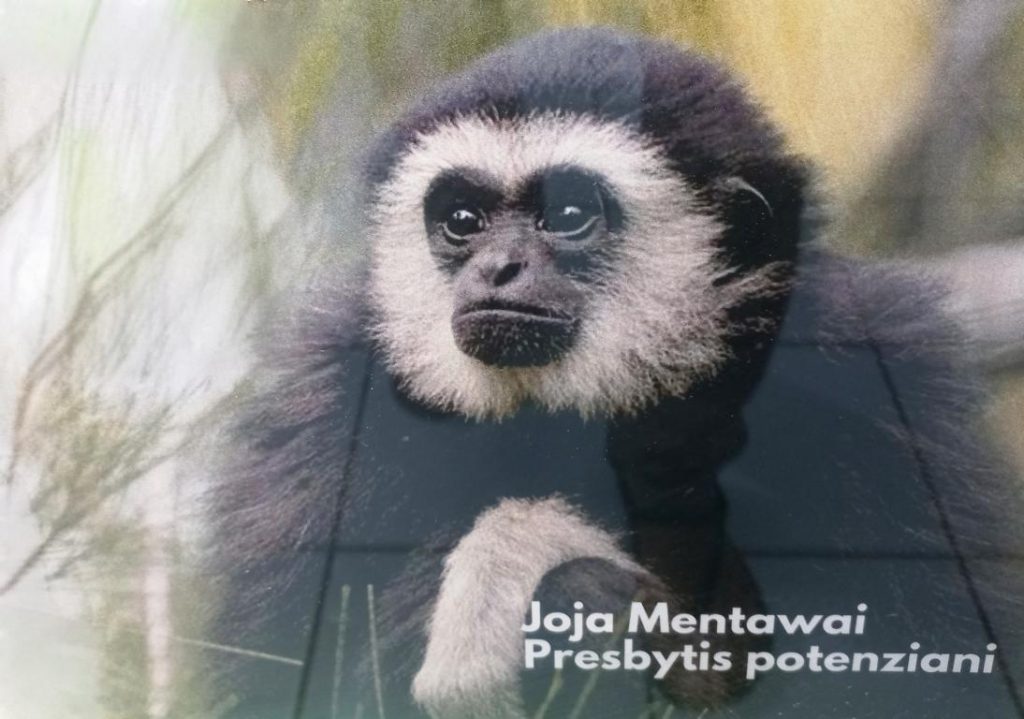
Mentawai langurs have a slightly more extensive day range compared to Simakobu. They also rest most of their daily time (51%) and feed on 36% of their daily activities. They live on 55% fruits and 35% leaves, and arthropods are not eaten. Therefore, Jojas are inconspicuous in their movements and are often found around fruit trees.
All three species utilize the lower layers of secondary rainforests and semi-deciduous tropical forests and are, therefore, within reach of longbows, poisoned air gun pellets, dogs, and traps. Like Simakobu, they also visit distinctive sleeping trees daily, and they are mainly fructivorous.
Kloss’ Gibbon; (Hylobates klossii), Bahasa Indonesia: Bilou

Siberut’s fourth monkey species is Kloss’ Gibbons. They reside in the crowns of the highest rainforest layers, out of reach for weapons like longbows, air guns, and traps. Mentawai shamans have a taboo against shooting these gibbons, and most hunters respect this, avoiding targeting these animals.
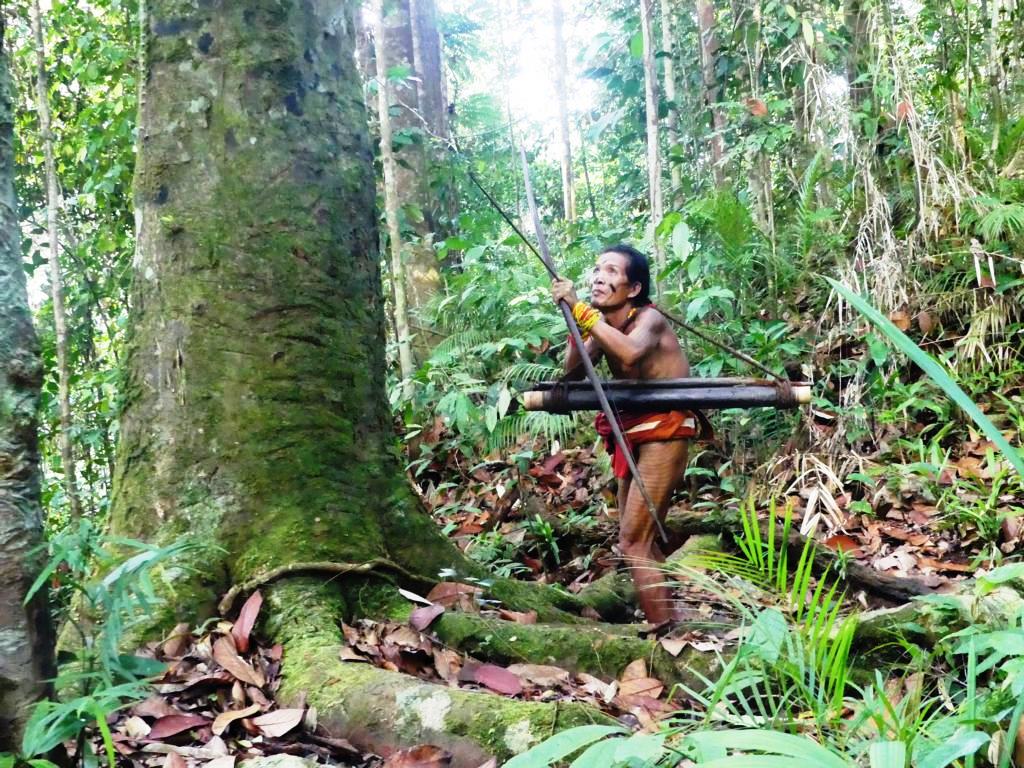
In addition to monkeys, Mentawai hunters also target and consume porcupines, sun bears, civet cats, fruit bats, squirrels, wild pigs, Rusa deer, Muntjac deer, and Mouse deer. For harvesting birds, they mainly aim for various Hornbill species due to their substantial size and meat yield.
Shamanic ceremony before the hunt
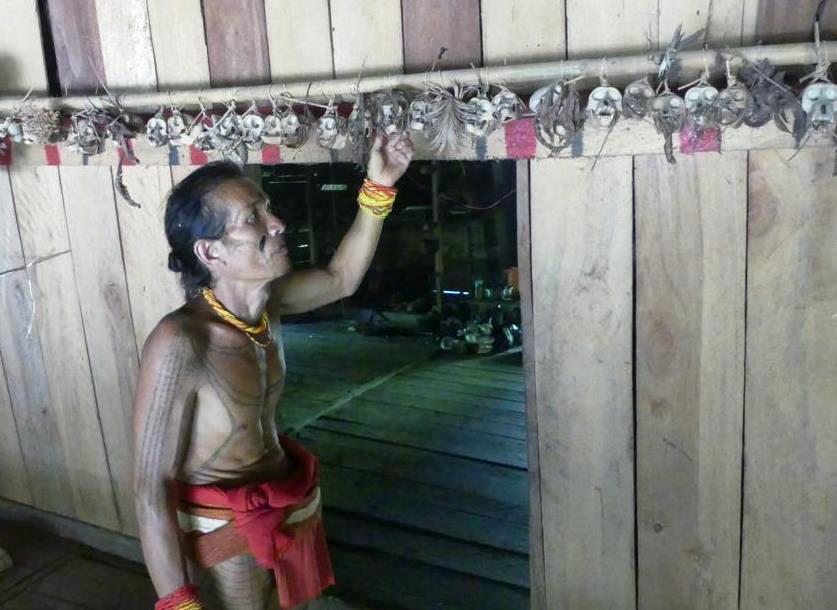
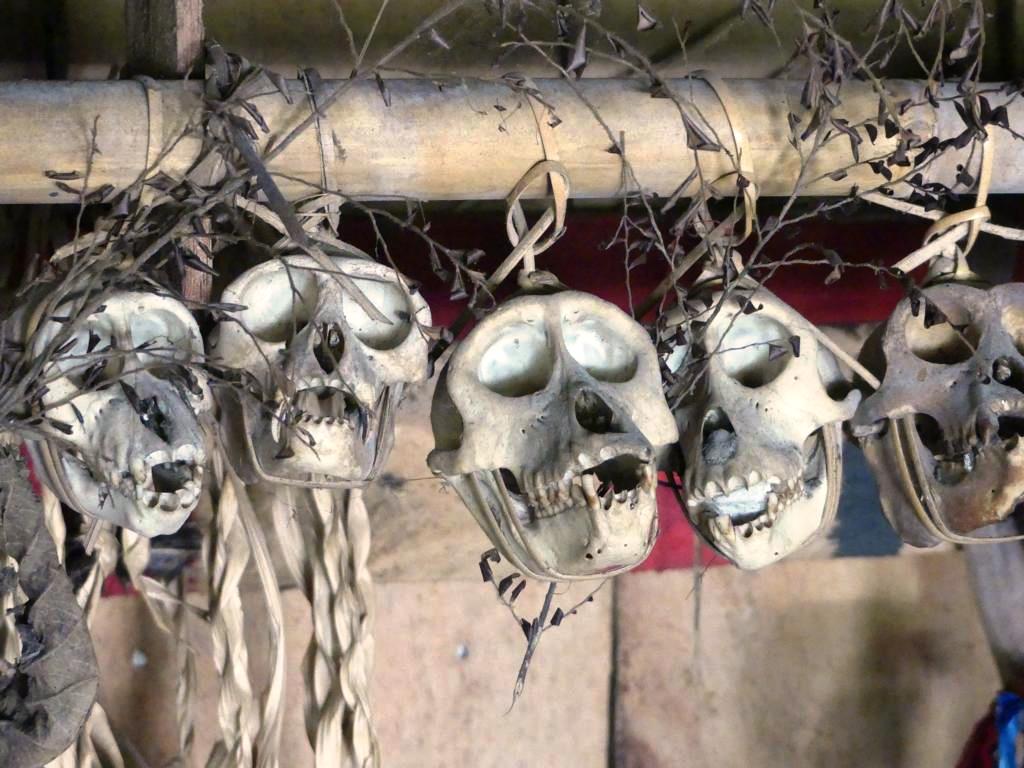
The night before the hunt, Aman Aru, our Uma‘s leader, touched each monkey skull in the gallery and chanted a ceremonial song. He asked the souls of his hunting trophies to encourage their living relatives to willingly allow themselves to be killed so that their souls also receive an honorable place in the Uma next to their relatives.
Hunting methods of Mentawai
Bow hunting with poisoned arrows.
According to this source, hunting with poisoned arrows was done by 84 – 89% of hunters in a Siberut-wide study group.
A typical hunting trip for one of the three target monkey species typically takes up to one week. The hunter will go alone into the forest with only his weapons, headlamp, machete, cooking pot, and tarp. Plus, his items in the loincloth and a bunch of Sago sticks. Items in the loincloth are cigarettes, a lighter, and a small tin of camphor ointment against poison leaf and other stings.
He will start walking to the hunting area so early in the morning that he arrives at the sleeping area of targeted monkeys around half an hour before first dawn. Typically, he will leave his Uma at around 2:30 am and be at the target area at 5 am at the latest. He settles down and quietly waits for the monkeys’ first movements. These can be heard whooshing in the trees when they jump from one branch to another. Only Siberut macaques come down to the forest floor, where they can be heard monkeying around.
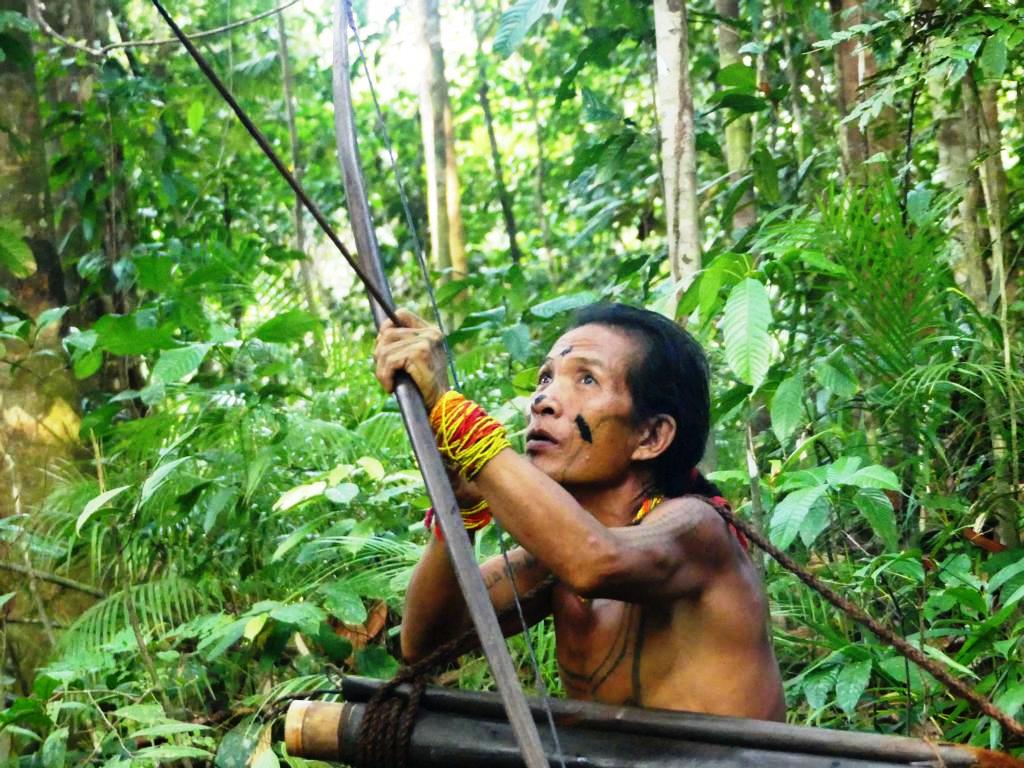
The hunter will try to edge closer to the group of monkeys and shoot an individual at a distance of up to 30 meters/yards. Mentawais shoots one arrow onto the target and multiple ones in quick succession. If a target is hit, the hunter remains completely quiet and figures out in which direction the troop is proceeding. Often, the hit target falls down the tree and clings to some branches until the poison affects it, so it can’t hold on to the tree anymore. This will probably happen after some minutes from the first hit.
After the morning hunt
During the day, the hunter preserves the meat by smoking and closely observes the surrounding area. He tries to find the preferred food trees of a monkey troop and their sleeping tree. The following day, he positions himself very close to this tree and gets another body for smoking.
Studies by anthropologists have shown that in most cases, the hunters will head home after harvesting one monkey on a planned one-day trip or two monkeys after a planned week-long trip.
Hunting with air guns and poisoned pellets
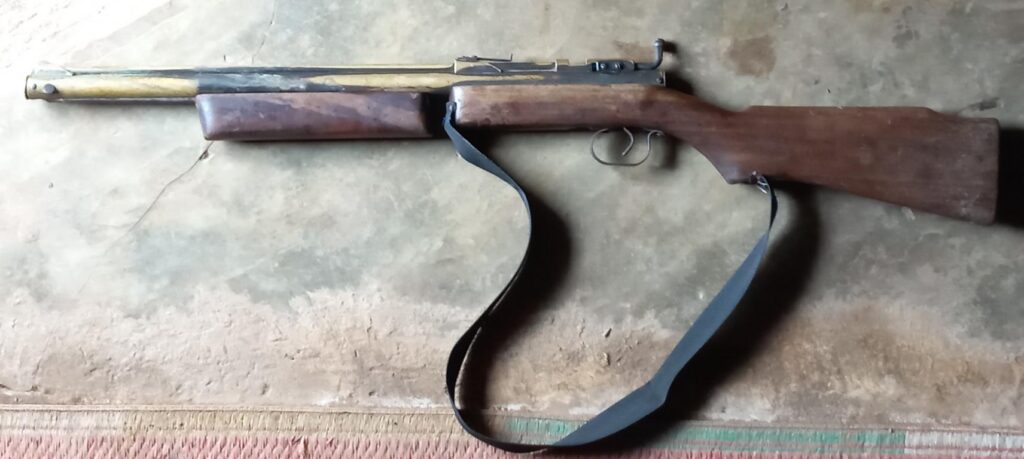
When visiting the grandson of Aman Kuki, the famous shaman who died in March 2024, I learned that he owned a bow, poisoned arrows for hunting, and an air gun. That was quite surprising, as air guns were already banned in 1987 in Indonesia. However, I was told that this ban is not enforced at Siberut Island to keep hunting traditions alive (?).
That air gun was an outdated piece of equipment, and I also saw the same model with the Orang Rimba people in Jambi province. Shooting on a banana tree for testing power and accuracy was enlightening, as was seeing how much both parameters fluctuated at every shot due to changing air pressures. In my opinion, this air gun model is a piece of equipment that can only be used for successful hunting together with poisoned pellets. A target will be randomly hit and can only kill through the poison in the bloodstream. Both air gun holders I met were not using poisoned pellets but used the gun for lucky shots on birds and squirrels.
Hunting with dogs
In this source, it is mentioned that one of Mentawai’s hunting methods is using dogs. However, I did not see any dog in any of the visited Umas. Dogs would only be used when sent as a pack for searching and baying wild pigs. Or for a surprise attack on Siberut macaques (Bokkoi). The hunter would have to follow his pack of dogs through rugged rainforest terrain and kill off the pig or macaque with a spear. But there were no spears in any of the Umas we visited. And – as I could not see any dogs or spears – I’m sure that in the Buttui area of Siberut, no dogs are used for hunting these animals. Also, during the intensive discussions with Aman Aru about hunting, he never mentioned hunting with dogs in his area.
Use of traps and snares to catch primates
Of all four species of monkeys, only Siberut macaques (Bokkoi) spend significant time on the forest floor. There, they can be caught with traps and snares. And seldom will Joja be caught by such devices. The most common traps for monkeys are:
- Pepper-and-sand monkey trap
- Bamboo spear monkey trap
- Monkey stone trap
- Monkey cage trap
I will describe these traps in detail in future articles on this website.
Lessons learned from hunting methods by the Mentawai people
- Three different monkey species are the primary targets for bow hunting.
- The three other hunting methods—chasing game with dogs, using traps and snares, and shooting with air guns—are of lesser interest to hunters at Siberut Island.
- The hunting methods of the Mentawai people are based on single hunters who are independently searching for targets over a multi-day period.
- Hunters closely observe areas to find food- and monkeys’ sleeping trees.
- Besides monkeys, other animals are opportunistically taken if encountered by chance.
.



